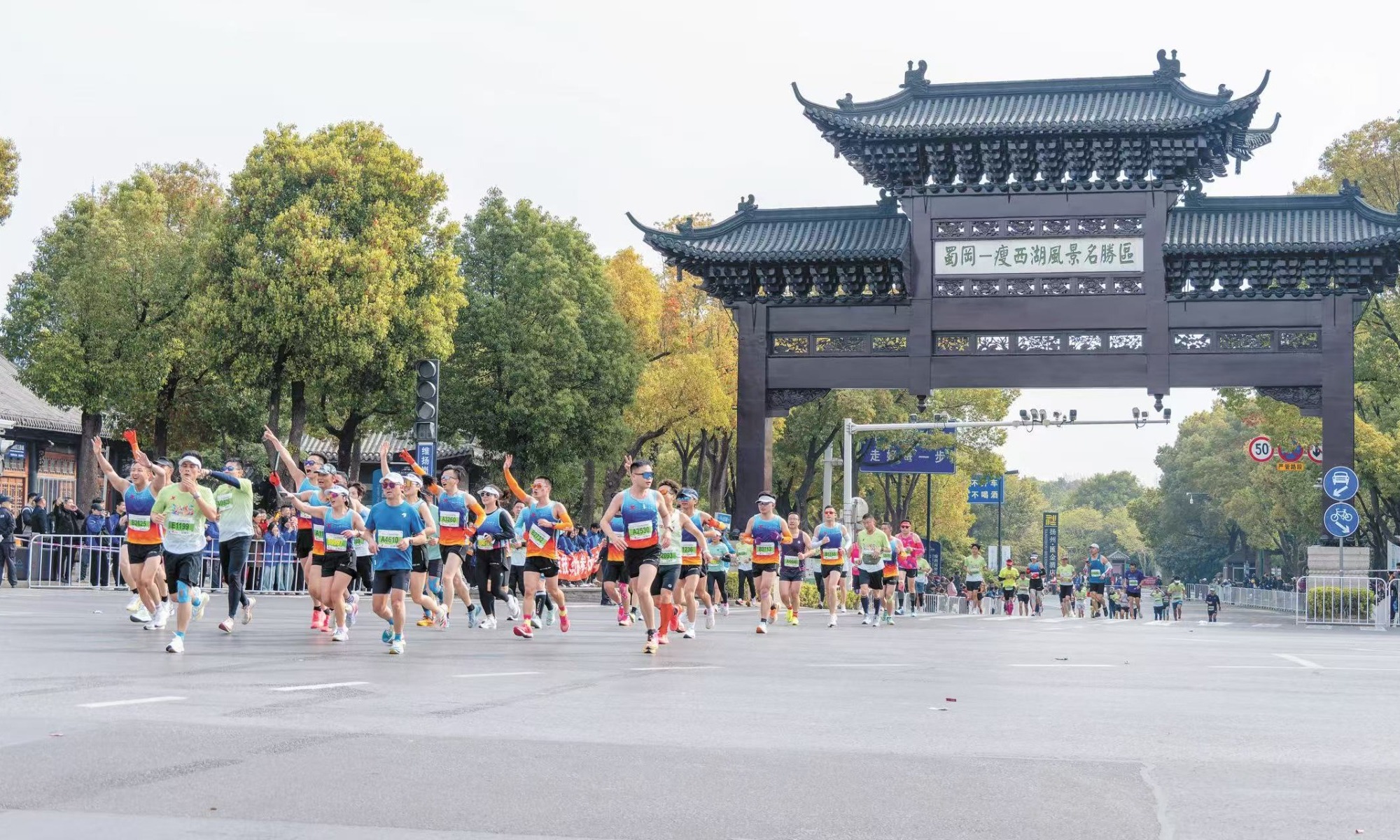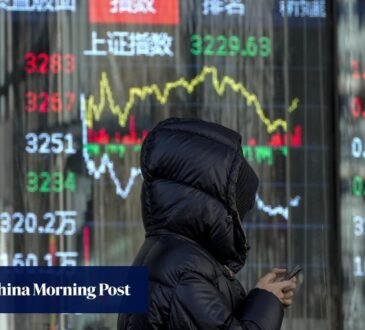
A marathon event takes place in Yangzhou city, East China’s Jiangsu Province, on March 30, 2025, with over 30,000 runners competing in the long-distance race. The event features a Half Marathon with 20,000 runners and a Fun Run with 10,000 participants. Photo: VCG
“My boyfriend has been a huge Formula One motor race fan for years, and we have always been talking about going to the race in person, especially when it is held in China,” a Beijing-based white-collar surnamed Xiong told the Global Times.
Xiong said that she wants to attend the 2025 Chinese Grand Prix from March 21 to 23 in Shanghai. This highlights how a single-day sport event can generate multi-day stays and associated spending, and encapsulating the lived experience of many Chinese sport enthusiasts.
Large-scale sport events have become a priority for local governments aspiring to convert spectator traffic into economic gains.
More than 220,000 spectators, a record high, watched the F1 Shanghai event in person in 2025, coinciding with the game’s 75th anniversary, according to statistics from the General Administration of Sport of China (GASC). Hotel bookings within a 3-kilometer radius of the Shanghai International Circuit – the venue of F1 – surged by 213 percent year-on-year, according to a note travel platform Trip.com sent to the Global Times on Tuesday.
Rising sports enthusiasm
This year’s F1 saw 15.3 percent of attendees coming from overseas – with 60 percent traveling to Shanghai exclusively for the event, doubling last year’s number, GASC data showed.
The influx drove strong consumption, especially in luxury hotel rooms, duty-free stores, and upscale dining.
During the Shanghai event, the city also paired the race with parallel attractions – such as the Auto Culture Festival, Peach Blossom Festival, and Cherry Blossom Festival – creating a comprehensive tourism ecosystem around the race.
Other Chinese cities are replicating the Shanghai F1 model. In Wuxi, East China’s Jiangsu Province, a Marathon Expo was launched to amplify consumption around its flagship marathon race, held on March 23.
Wuhan in Central China’s Hubei Province granted marathon participants a cherry blossom cultural tourism package, giving them access to 21 A-grade attractions and 23 premium travel experiences there.
The annual “marathon super weekend” returned as usual in late March, with nearly 20 major races being held across China, showcasing how cities can use sports events as leverages to boost tourism and local economy.
Wuxi and Wuhan’s recent marathon events together attracted 900,000 participants – both breaking Asian records.
Wuxi’s marathon this year generated 505 million yuan ($69.6 million) in revenues, rising 78.2 percent year-on-year. A runner named Zhang Qian from South China’s Shenzhen turned the race weekend into a family trip. “My whole family explored local attractions in Wuxi after the marathon,” Zhang told CCTV news.
China’s road races attracted a total of 7.05 million participants, up 1 million from 2023. Meanwhile, seven elite races including the Shanghai event generated average revenue of 419 million yuan, according to the Chinese Athletics Association.
Last year, Shanghai city garnered revenues of 11.38 billion yuan from the 178 international sports events held in the city, while related service sectors earned 30.99 billion yuan, official data showed.
In North China’s Hebei Province, 4,454 sports events held in the first 11 months of 2024 drew 10.5 million athletes and spectators, generating 15.4 billion yuan in catering, accommodation, entertainment, and shopping.
As Chinese residents’ disposable incomes continue to grow and health initiatives like Healthy China 2030 accelerate, demand for sports activities in China continues to rise, driven by strong public enthusiasm, Wang Peng, an associate research fellow at the Beijing Academy of Social Sciences, told the Global Times.
“Inspired by the country’s robust policy guidance, sports events are generating new opportunities, fostering integrated development across multiple sectors, injecting strong momentum into the sustained growth of domestic consumption,” Wang said.
Yet the huge potential of the “event economy” remains untapped. In the industrial structure of many developed countries, sports events and artistic performances often account for about 20 percent of services sector output value.
China’s per-capita event economy remains at just 4 percent of levels of developed economies – a gap signaling vast untapped potential, according to a report by China Tourism Academy.
More sectors integrated
In addition to sports-induced tourism, China has expanded into diverse integrated tourism models, including cultural tourism, agricultural tourism, industrial tourism, health and wellness tourism, technology-driven tourism, educational tourism, and more, and the country has achieved initial success in fostering consumption growth.
Wang suggested that other composite tourism models should draw inspiration from the successful practices of cultural tourism to identify their own suitable development patterns, while expanding the provision of high-quality products and services.
For example, the game Black Myth: Wukong, which was released in August 2024, has brought 36.5 million tourists to North China’s Shanxi Province, whose historical locations feature prominently in the game, during the National Day long holidays, up 84.99 percent year-on-year, official data showed.
Shanxi Province generated 22.687 billion yuan in tourism revenue during the same period, up 101.85 percent year-on-year.
In order to stimulate diversified consumption through cultural-tourism integration, many Chinese cities are currently deploying innovative incentives in order to fulfill the target spelt out in the 2025 Government Work Report —”stepping up efforts to foster new forms of cultural business, and vigorously develop the tourism industry.”





